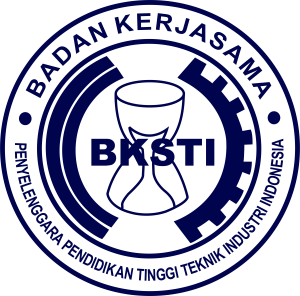ANALISIS PENINGKATAN TINGKAT PENGUJIAN ULANG DALAM PROSES UJI LABORATORIUM PRODUK TEKSTIL MENGGUNAKAN METODE FMEA
DOI:
https://doi.org/10.37090/indstrk.v4i1.182Abstract
Third-party laboratories are laboratories that provide analytical services as quality control of an item to be marketed. In its activities, sometimes the results of the analysis produced by the laboratory are not all acceptable because there are analysis results that do not meet the test quality specifications. The purpose of this study is to improve the defect rate on the test results using QC tools and FMEA methods. The findings in this study identify the main root causes are the errors of analysts when doing testing, there are no standard procedures for instrument maintenance, and lack of supervision. The proposed improvements given are personnel training, working instruction for instrument maintenance, logbook for record the activity and tighter supervision. After repairs, the defect rate in the test results can be reduced from 5.72% to 1.02%.
Keyword: FMEA, Laboratory, Re-testing, Textiles.
Downloads
References
B. G. Hwang, S. R. Thomas, C. T. Haas, and C. H. Caldas, “Measuring the impact of rework on construction cost performance,†J. Constr. Eng. Manag., 2009.
G. Lippi et al., “Effectiveness of a computerized alert system based on re-testing intervals for limiting the inappropriateness of laboratory test requests,†Clin. Biochem., 2015.
R. C. Hawkins, “Potentially inappropriate repeat laboratory testing in inpatients [16],†Clinical Chemistry. 2006.
A. P. Huissoon and S. A. Carlton, “Unnecessary repeat requesting of tests in a university teaching hospital immunology laboratory: An audit [2],†Journal of Clinical Pathology. 2002.
P. Carrano and M. Plebani, “Process control reduces the laboratory turnaround time [2],†Clinical Chemistry and Laboratory Medicine. 2002.
P. E. D. Love, D. J. Edwards, J. Smith, and D. H. T. Walker, “Divergence or congruence? A path model of rework for building and civil engineering projects,†J. Perform. Constr. Facil., 2009.
W. K. Chong and S. P. Low, “Assessment of defects at construction and occupancy stages,†J. Perform. Constr. Facil., 2005.
S. Woodhouse, B. Burney, and K. Coste, “To err is human: Improving patient safety through failure mode and effect analysis,†Clinical Leadership and Management Review. 2004.
H. Hasbullah, M. Kholil, and D. A. Santoso, “ANALISIS KEGAGALAN PROSES INSULASI PADA PRODUKSI AUTOMOTIVE WIRES (AW) DENGAN METODE FAILURE MODE AND EFFECT ANALYSIS (FMEA) PADA PT JLC,†SINERGI, 2017.
M. L. Chiozza and C. Ponzetti, “FMEA: A model for reducing medical errors,†Clin. Chim. Acta, 2009.
M. Capunzo, P. Cavallo, G. Boccia, L. Brunetti, and S. Pizzuti, “A FMEA clinical laboratory case study: How to make problems and improvements measurable,†Clin. Leadersh. Manag. Rev., 2004.
Y. Jiang, H. Jiang, S. Ding, and Q. Liu, “Application of failure mode and effects analysis in a clinical chemistry laboratory,†Clin. Chim. Acta, 2015.
G. P. Putra and H. H. Purba, “Failure mode and effect aanalysis on power plant boiler,†J. Optim. Ind. Eng., 2018.
R. Thakore, R. Dave, and T. Parsana, “A Case Study: A process FMEA Tool to Enhance Quality and Efficiency of Bearing Manufacturing Indudtry,†Sch. J. Eng. Technol., 2015.
J. F. van Leeuwen et al., “Risk analysis by FMEA as an element of analytical validation,†J. Pharm. Biomed. Anal., 2009.









